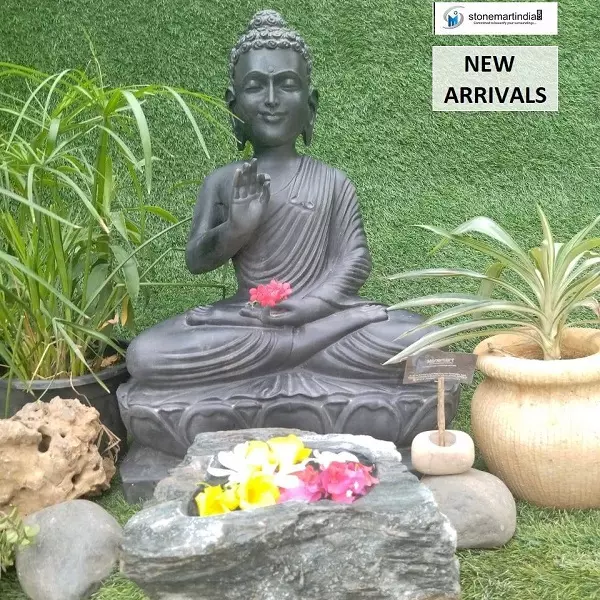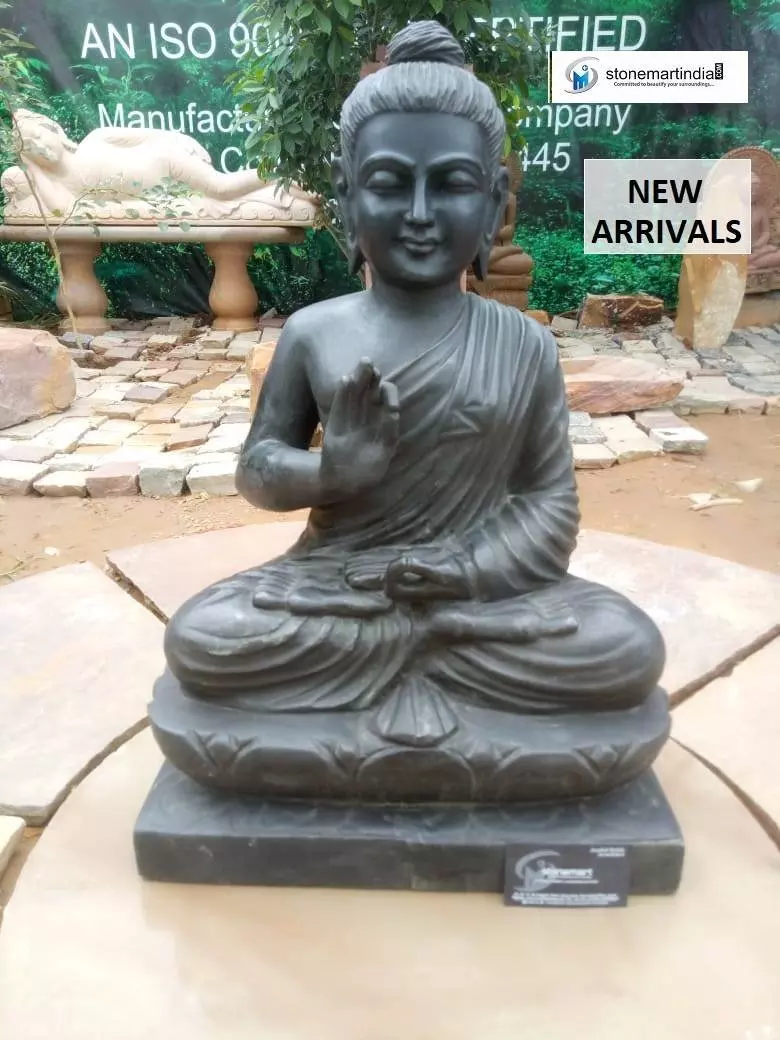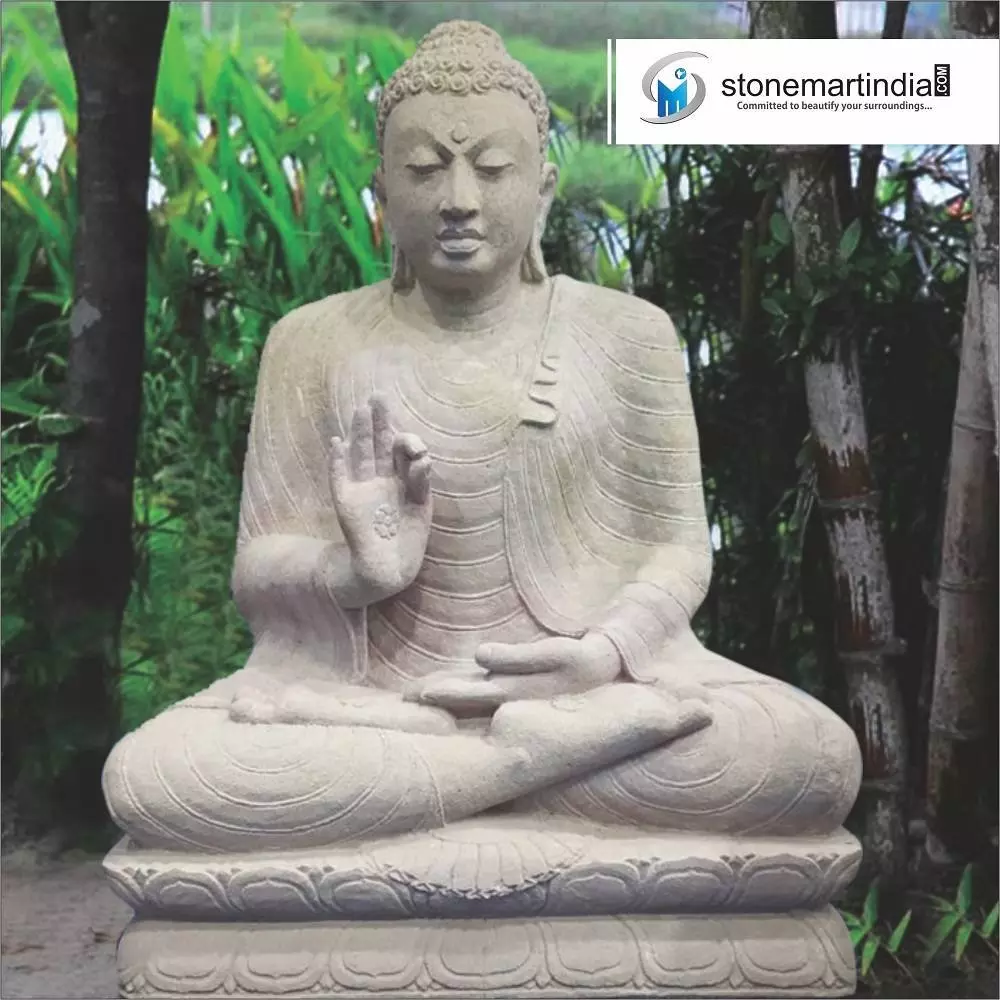
The purchase of an original quality Buddha statue comes along with an immense number of benefits. Some of the people bring it in for encouraging wisdom, the development of a sense of reality, uplifting energy, bringing enlightenment, elimination of Vaastu doshas, as well as to bring in good luck and fortune.
There are Buddha stone statues that not only purchased to fulfil the spiritual and decor needs, rather to successfully match up with the special requirements. For instance, Vitarka mudra Buddha statue is known to be a beacon of immense knowledge, wisdom and concentration, and a strongly recommended form of sculpture at schools, colleges, universities, cultural forums as well as at the research and vocational training institutes. Apart from that, at any centre for learning where debates and discussions are encouraged, a Vitarka mudra statue of the lord Buddha is a sheer source of aura channelising the energy of the people in a constructive, positive direction.
What Does the Vitarka Mudra of the Buddha Symbolise?
Vitarka mudra is a symbolic posture of the lord denoted with a ritualistic hand gesture common in Yoga, Hinduism, and Buddhism. The term has been derived from the Sanskrit word known as Vitarka. The word defines “reasoning”, “deliberation” or “consideration”, and commonly symbolised as the “gesture of debate” or the “mudra of discussion”.

When you look at the Vitarka mudra Gautam Buddha statue closely, then you would find that it is performed by a connection of the tip of the index finger with the inner surface of the thumb. All the remaining fingers of the hand are extended toward the sky. The palm of the hand is typically extended in the outward direction, away from the body.
Why Vitarka Mudra is a Secret to Success for Scholars and Intellectuals?
It is one of the most popular and symbolic mudras of the lord Buddha. It is widely practised in the field of yoga and meditation to successfully control the flow of energy into the body and to unblock the chakras. Apart from being one of the most common postures of yoga, there are certain head, lock, postural and perineal mudras. The circle which is formed with the connection of the thumb and the index finger symbolises an uninterrupted flow of knowledge and energy. This flow of energy and knowledge represent the transmission of wisdom attained through the explanation of his teachings. This common hand gesture in Buddha statuary was particularly used in ancient Thailand.
When we look at the history of Vitarka mudra stone carved Buddha statue, then would find that it tends to be practised with the right hand only. But today, it is often practised with both the hands. There are postures, where the thumb as well as the middle finger touch each other, symbolizing compassion, whereas in other instances, the thumb touches the ring finger, indicating the sign of good fortune. There is another version of this mudra, in which the left hand simply rests the palm up on the lap, while the right hand gets raised to the shoulder level with simultaneous touch of the thumb and the index finger.
Why is Vitarka Mudra Recommended to the Centres of Knowledge for Intellectual Argument and Debate?
The Buddha, when forms a circle of his hand with the connection of the thumb and the index finger, it is known as the Dharmachakra. It is a word in Sanskrit that denotes the ‘Wheel of Dharma’. Historically, the mudra is the symbol of one of the most decisive moments of the Buddha’s life. The first form of debate that the lord and his disciples participated in was during the first sermon that took place at the deer park in Sarnath post enlightenment. The vitarka of the first sermon kickstarted in motion the wheel of the teaching of the Dharma.
The Wheel of Dharma is represented by the circle, which is in metaphysical terms, a union of wisdom and method. Most of the people tend to believe that the remaining three extended fingers of the hand have no symbolic significance at all. They cannot be more wrong!

Here, what is pivotal to understand that the three extended fingers of the right hand do represent the three major vehicles of the teachings of the Buddha, namely –
- The middle finger is representing all ‘hearers’ of the concerned teachings.
- The index finger is representing all ‘realizers’ of the concerned teachings.
- The little finger is representing the Mahayana or the ‘Great Vehicle’.
On the other hand, the three fingers extending from the left hand represent the iconic Three Jewels of Buddhism, named as, the Dharma, the Buddha, and the Sangha. Primarily speaking, in the vitarka mudra, irrespective of the fact whether you are making the posture with the right hand or the left hand, it is required to be held right in front of the heart. The gesture symbolizes the fact that all the teachings are coming to the pupils straight from the heart of the Buddha.
Where to Find Bona Fide Vitarka Mudra Buddha Statue Online?
Vitarka Buddha statues are widely regarded as an inevitable part of any academic, research or cultural institution. To ensure that you reap maximum benefit out of the ordered Buddha statue in his vitarka mudra, it is imperative that the concerned statue shall remain free of impurities and naturally robust in terms of natural stone properties.
We recommend you to reach Stonemart and see how 3 feet Buddha statue online, 4 feet Buddha statue online or 5 feet Buddha Statue online or in any other measurement or size can be ordered without any risk at the most fair and transparent price ever.
